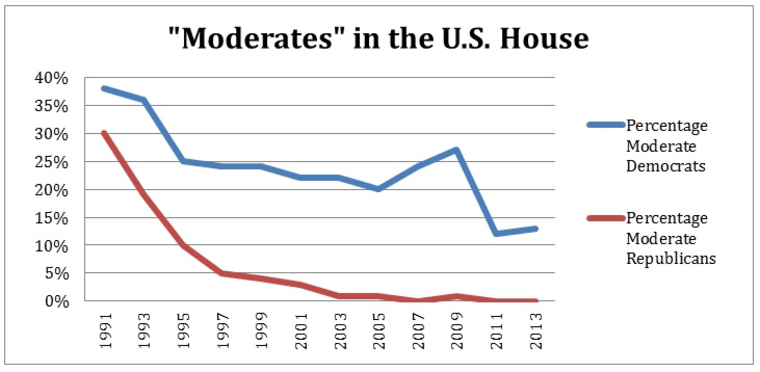After years of fights and intra-party struggles, John Boehner last week announced he is retiring from Congress and stepping down from the House Speaker’s job at the end of October. So change is coming to Congress, right?
Don’t be so sure. Changing Congress and the atmosphere around it isn’t as simple as giving the keys to a new boss.
When you look closely the numbers, the roots of the federal government’s challenges reach far beyond the Beltway. Many of the key elements of Congress’s current gridlocked status are baked in – driven by a set of factors that have become part of the current American political reality and that are difficult to change.
One, there is a growing ideological divide between Democratic and Republican voters. Two, the members of the U.S. House have grown increasingly partisan. And three, congressional district lines have been drawn to highlight and deepen those voter/member splits, making change even more difficult. Let’s look the issues more closely.
The growing ideological divide among voters. The Pew Research Center has measured this split over time by asking people a series of broad questions on big issues – the role of government, race relations, immigration – to see how ideologically consistent the answers of Democrats and Republicans are. The respective rightward and leftward drifts over the past 20 years are noticeable.

The movement among self-described Democrats has been more pronounced, but big takeaway from that table above more than 50% of the members in both parties hold largely liberal or conservative values. That means both Democratic and Republican politicians are speaking to more ideologically pure bases. There’s less room in the middle for candidates that want to appeal to political moderates.
Members in Congress are increasingly partisan in their voting. Over the last 25 years, Democrats and Republicans in the House have become increasingly likely to vote with their party. Prof. Keith Poole at the University of Georgia looked at roll call votes in the chamber and used those numbers to figure the percentage of Democrats and Republicans that could be classified as “moderates.” The drop since 1991, the year Mr. Boehner was sworn into the House has been precipitous.

Going by those numbers, the percentage of “moderate” Republican members in the House sits right around 1%. For Democrats the number is not much bigger, about 13%. Two decades ago, those figures were much higher.
And looking at that chart, what’s remarkable is how hard it is to change the tide on this dynamic. Note the small rise in moderate Democrats in 2009 – members who came in on President Barack Obama’s 2008 coattails. Then note the steep drop in 2011 – as Republicans won big in the midterm election.
The point? The compromises essential to getting things accomplished are harder to make.
Congressional districts are less likely to change hands. Americans say they are dissatisfied with Congress, but House members are “safer” now than they were in 2000 – or at least seats are less likely to change hands between parties, according to data from the Cook Political Report.
Cook’s Partisan Voter Index uses a single number to measure how strongly each congressional district leans Democratic or Republican. And using that measure the number of House districts that are likely to swing between parties has fallen since the turn of this century.

In the table above, “competitive” seats are those with a Democratic or Republican lean (or PVI) or less than 5. “Very competitive” seats are those with a lean of less than 2 for either party. And by either measure, you can see the decline. There are simply fewer seats that are likely to change party.
So yes, the House will soon get a new boss. But the institution Mr. Boehner is leaving was not created by him. The forces behind it are not under his control.
And despite all the unhappiness voters express in polls, at the voter, member and district levels – which are the levels that count – there doesn’t seem to be appetite or a mechanism for quickly changing the way Congress operates.